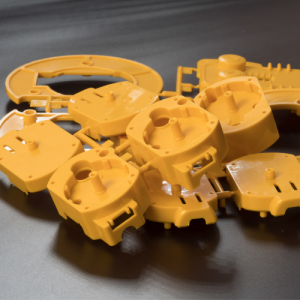
Injection molding is one of the most common forms of plastic production. If you look around your home, you’ll see at least a few items with components built from an injection mold. Learn more about the most common materials used for injection molding.
Nylon or Polyamide
Nylon—also called polyamide, its chemical name—is a strong, dense material perfect for applications requiring durability. Since nylon is lightweight compared to its metal counterparts, it’s the preferred material for things like parts in automobile construction.
Acrylic or PMMA
Polymethyl methacrylate—also known as PMMA or simply acrylic—is a transparent plastic with high tensile strength. Its features make it the perfect alternative to glass. Additionally, dyes mix well with acrylic, so you can create most colors in the material itself. You can find acrylic in everything from lampshades to food containers.
Thermoplastic Polyurethane
There are several variations on injection molding, including reaction injection molding. While it takes some practice to know when to use reaction injection molding, when the time comes, you should use thermoplastic polyurethane. Soft and elastic, thermosetting polyurethane is the ideal solution for this type of molding because the plastic solidifies and expands post-injection.
Acrylonitrile Butadiene Styrene
Acrylonitrile butadiene styrene, usually shortened to ABS, is a thermoplastic known for its strength and impact resistance. Because of its physical properties, you can find ABS in items like computer keyboards, electrical outlets, and car dashboards. Though it’s not a great choice for outdoor applications, the engineering-grade strength makes it a go-to solution for dozens of products.
Read more: The Most Common Materials Used for Injection Molding